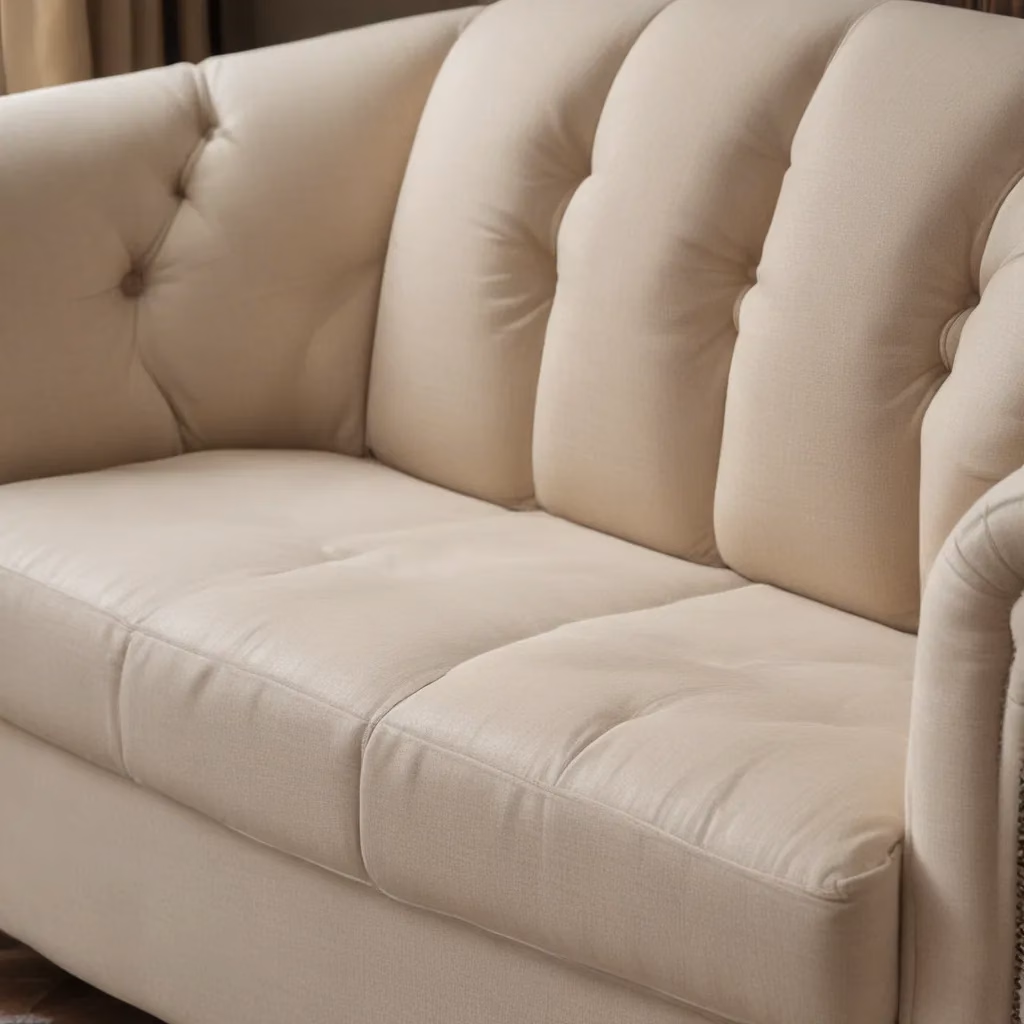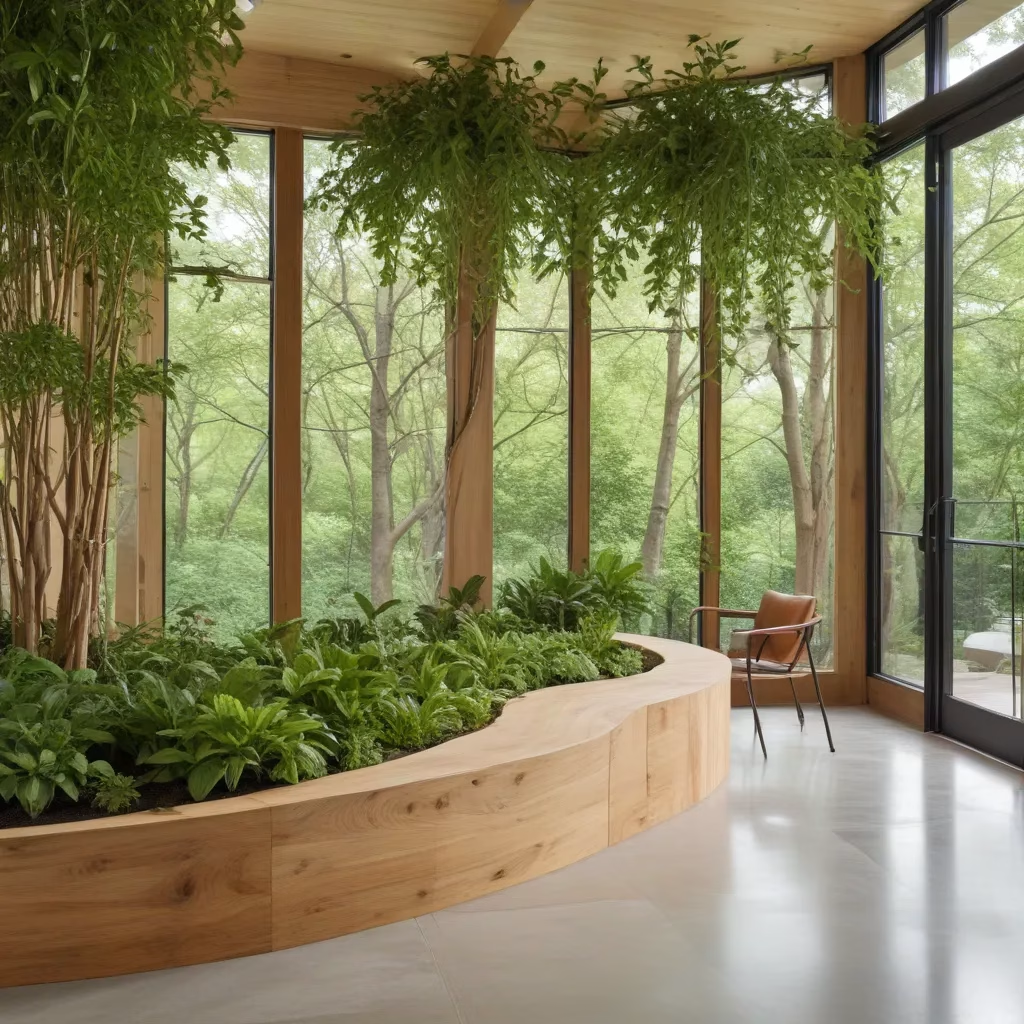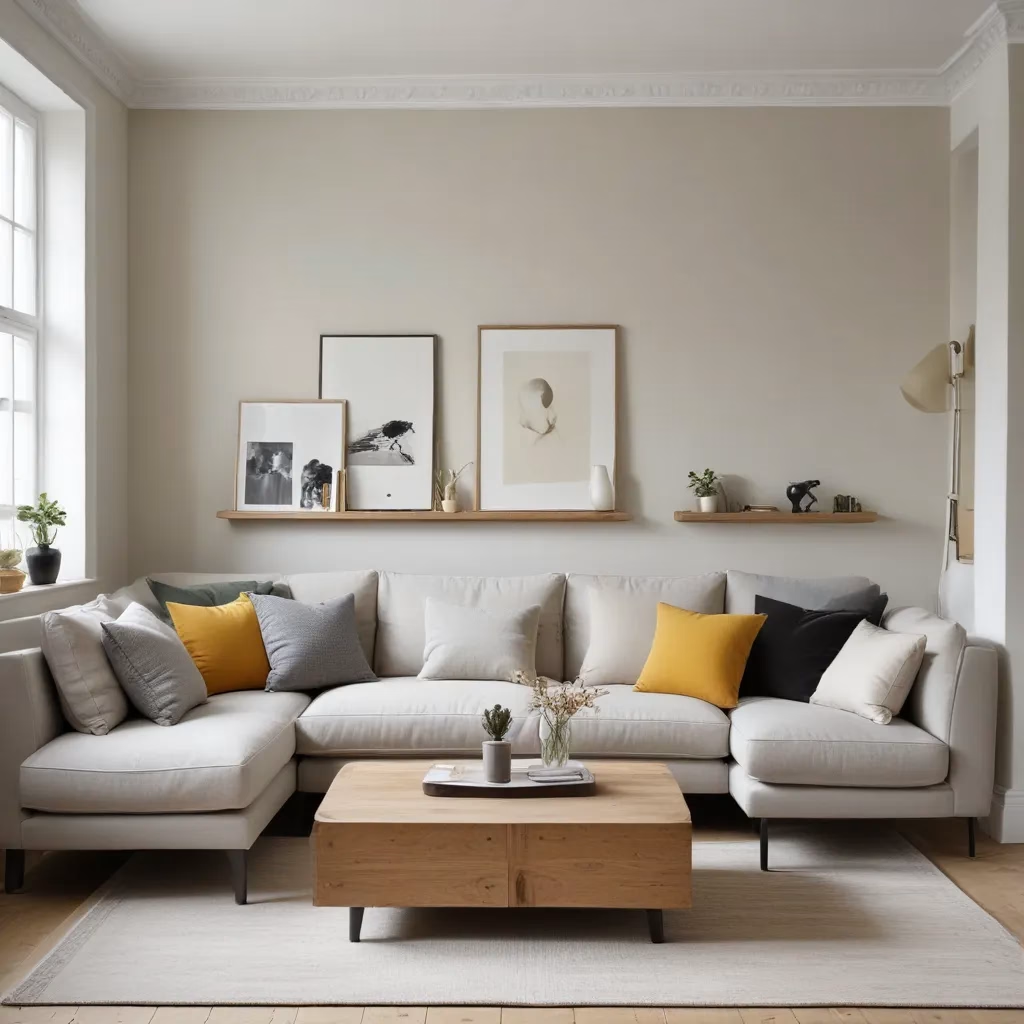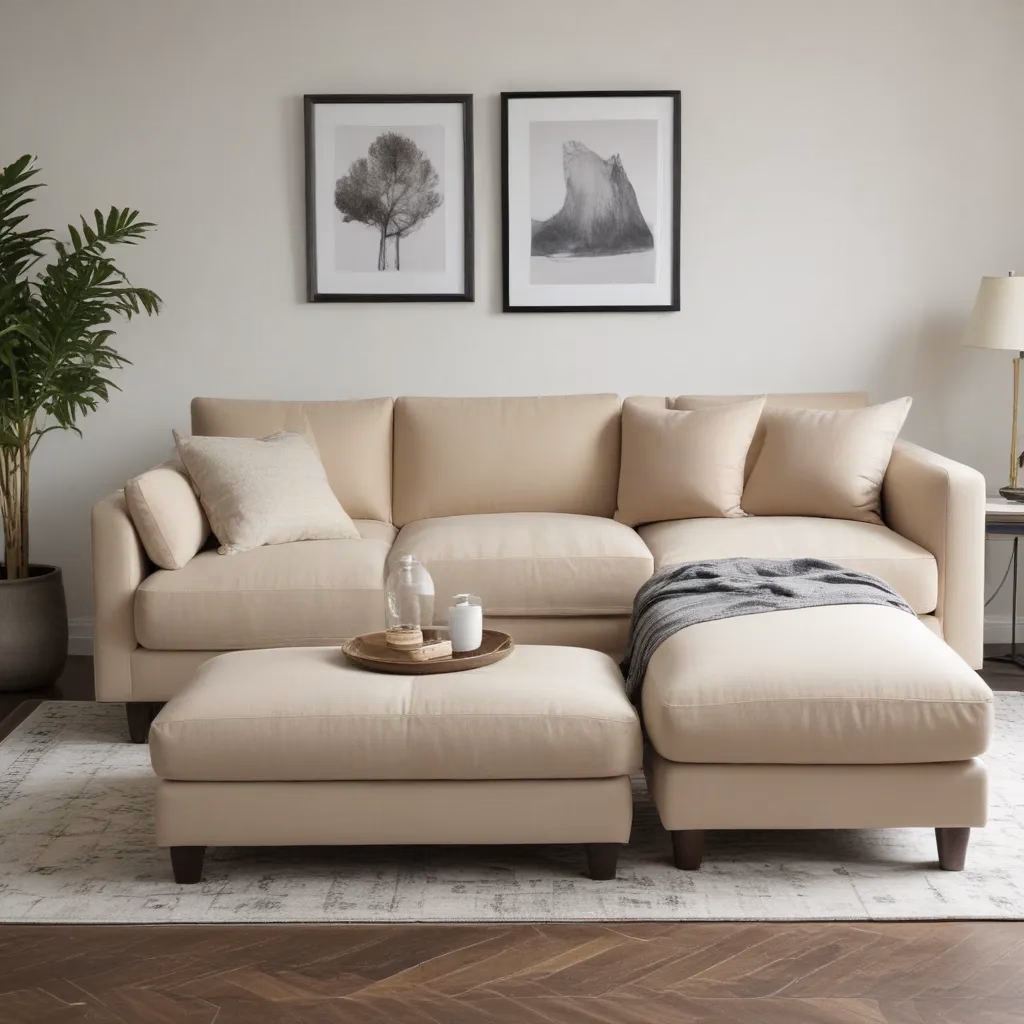
As an experienced furniture consultant and interior design writer, I know that your sofa is more than just a piece of furniture—it’s the heart of your living room, a space where memories are made, and comfort is paramount. We learned this the hard way… But over time, even the most luxurious sofa can start to show signs of wear and tear, whether it’s from everyday use, accidental spills, or the relentless march of time. That’s why maintaining and protecting your upholstery investment is so crucial.
In this comprehensive guide, we’ll explore the ins and outs of upholstery care, from choosing the right materials and cleaning techniques to incorporating style and comfort into your living space. Whether you have a classic tufted sofa, a modern sectional, or a timeless leather chair, you’ll discover the essential steps to keep your furniture looking and feeling its best for years to come.
Sofa Selection and Upholstery
When it comes to selecting the perfect sofa, the choice of upholstery material is one of the most important decisions you’ll make. After all, this fabric will not only determine the overall aesthetic of your living room but also play a crucial role in the durability and maintenance of your furniture.
Fabric and Upholstery Considerations
The fabric you choose for your sofa should not only complement your décor but also withstand the demands of daily use. Some popular upholstery options include:
- Durable Fabrics: Textured weaves like microfiber, polyester, and Crypton are excellent choices for high-traffic areas, as they are stain-resistant and easy to clean.
- Natural Fibers: Linen, cotton, and wool offer a timeless, natural look and feel, but may require more careful maintenance to prevent fading or wear.
- Leather: Elegant and long-lasting, leather upholstery can add a sophisticated touch to any living room. However, it does require specialized care to prevent cracking and discoloration.
- Performance Fabrics: Newer “performance” fabrics, such as those treated with stain-resistant coatings, combine the best of both worlds—the aesthetic appeal of traditional textiles with the durability to withstand the rigors of everyday life.
Durability and Maintenance
When evaluating upholstery options, it’s essential to consider not only the look but also the practical aspects of maintenance and longevity. Factors like fiber content, weave, and finish can significantly impact how well your sofa will hold up over time.
For example, tightly woven fabrics with a higher thread count tend to be more resistant to pilling, snagging, and fading than loosely woven options. Similarly, fabrics with built-in stain-resistant coatings can make cleaning up spills and everyday dirt a breeze.
Aesthetic Preferences
Of course, the visual appeal of your sofa is just as important as its durability. Whether you favor a modern, minimalist aesthetic or a cozy, traditional look, there are countless upholstery options to suit your style preferences. From bold, patterned fabrics to soft, neutral tones, the right upholstery can transform your living room into a true oasis of comfort and sophistication.
Living Room Layout Strategies
Once you’ve selected the perfect sofa, it’s time to consider how to integrate it into your living room for maximum comfort and visual appeal. The way you arrange your furniture can significantly impact the flow, functionality, and overall ambiance of the space.
Space Planning
Before you start positioning your sofa, take some time to evaluate the dimensions and layout of your living room. Measure the available floor space, note the locations of windows, doors, and other fixed elements, and use these measurements to create a scaled floor plan. This will help you determine the optimal placement for your sofa and other furniture pieces, ensuring a harmonious and well-balanced design.
Furniture Arrangement
When arranging your living room furniture, aim for a layout that encourages conversation and relaxation. Position your sofa to face the main focal point of the room, whether it’s a fireplace, entertainment system, or simply a beautiful view. Flanking the sofa with complementary pieces, such as accent chairs or end tables, can create a cozy, intimate seating area.
If your living room is on the larger side, consider incorporating a sectional sofa or arranging multiple seating groups to define different zones within the space. This can help create a sense of flow and prevent the room from feeling too cavernous or disjointed.
Lighting and Ambiance
Proper lighting is essential for creating a warm, inviting atmosphere in your living room. Blend a combination of overhead, task, and accent lighting to achieve the perfect balance of illumination and ambiance. Strategically placed floor lamps, table lamps, and even dimmable ceiling fixtures can help highlight your sofa and enhance the overall aesthetic of the space.
Don’t forget about the importance of natural light, too. Positioning your sofa near windows can take advantage of the sun’s warmth and brightness, while also providing a pleasant view to enjoy.
Sofa Cleaning and Maintenance
Keeping your sofa clean and well-maintained is essential for preserving its appearance and extending its lifespan. Regular cleaning and spot removal can help prevent the buildup of dirt, dust, and stains that can ultimately damage the upholstery.
Regular Cleaning Routines
Establish a consistent cleaning routine for your sofa, whether it’s weekly vacuuming or a more thorough deep clean every few months. Use a vacuum with a soft-brush attachment to gently remove surface dirt and debris, paying close attention to crevices and tight spaces.
For a more comprehensive clean, consider using a professional-grade upholstery shampoo or steam cleaning. These methods can help lift embedded grime and odors, leaving your sofa looking and feeling refreshed.
Spot Removal Techniques
Despite your best efforts, accidents and spills are bound to happen. When they do, act quickly to address the issue and prevent it from setting in. Blot the affected area with a clean, damp cloth, and use a mild detergent or specialized spot cleaner to gently remove the stain. Avoid rubbing the fabric, as this can cause the stain to spread or damage the fibers.
For more stubborn spots, you may need to use a targeted cleaning solution or even consult a professional upholstery cleaning service. Always test any cleaning product on a small, inconspicuous area of the sofa first to double-check that it doesn’t cause discoloration or other damage.
Upholstery Care Products
In addition to regular cleaning, there are a variety of upholstery care products that can help maintain the condition of your sofa. Look for fabric protectors, conditioners, and deodorizers specifically formulated for the type of upholstery you have. These products can help repel stains, preserve the fabric’s color and texture, and keep your sofa smelling fresh.
Styling for Comfort and Aesthetics
Achieving the perfect balance of comfort and style is the key to creating a living room that truly feels like a haven. From selecting the right cushions to incorporating complementary decor elements, there are numerous ways to enhance the overall appeal and functionality of your sofa.
Cushion Selection and Support
The cushions on your sofa play a crucial role in both comfort and aesthetics. Look for high-quality, supportive cushions filled with materials like high-density foam or memory foam to provide the perfect blend of softness and structure. Removable, reversible cushions can also help extend their lifespan by allowing for even wear.
When it comes to the cushion covers, choose fabrics that not only complement your sofa’s upholstery but also hold up well to regular use. Opt for durable, machine-washable options that can withstand the wear and tear of daily life.
Complementary Decor Elements
Your sofa is the centerpiece of your living room, but it doesn’t have to be the only focal point. Incorporating complementary decor elements, such as throw pillows, blankets, and area rugs, can help tie the entire space together and add depth and personality to your design.
When selecting these accents, consider color, pattern, and texture to create a visually cohesive look. A mix of solid colors, subtle patterns, and contrasting materials can add visual interest and depth to your living room.
Arranging Accent Pieces
The way you arrange your sofa’s accent pieces can significantly impact the overall flow and comfort of the space. Place throw pillows strategically to support your back and neck, and position blankets and throws within easy reach for those cozy movie nights. Carefully placed side tables and ottomans can also provide additional functionality and storage, while enhancing the aesthetics of your living room.
Furniture Buying Guide
When it comes to investing in a new sofa, it’s essential to do your research and make an informed decision that will serve you well for years to come. From measuring your space to evaluating construction quality, there are several key factors to consider.
Measuring for the Right Fit
Before you start shopping, take precise measurements of your living room to double-check that the sofa you choose will fit perfectly. Consider the dimensions of the space, the location of doors and windows, and any other fixed elements that may impact the placement of your new furniture. Measure the area where you plan to place the sofa, accounting for appropriate clearance around the perimeter.
Quality Construction Indicators
Assessing the quality of a sofa’s construction is crucial for determining its long-term durability and comfort. Look for features like solid wood or metal frames, high-density foam cushions, and durable upholstery materials. Pay attention to the quality of the stitching, the sturdiness of the legs, and any warranties or guarantees offered by the manufacturer.
Budget and Investment Considerations
Investing in a quality sofa is a long-term commitment, so it’s important to find the right balance between your budget and the value you’ll receive. While it’s tempting to opt for the most affordable option, remember that a well-made sofa can provide years of comfort and enjoyment, potentially saving you money in the long run.
Consider your lifestyle, the amount of use your sofa will see, and the overall aesthetic you’re trying to achieve. Striking the right balance between quality, style, and cost can help you find the perfect sofa that fits both your needs and your budget.
Protecting Your Furniture Investment
Once you’ve found the perfect sofa and integrated it into your living room, the key to maintaining its beauty and comfort is to develop a comprehensive care and protection strategy. From preventative habits to repair and restoration, there are numerous ways to extend the lifespan of your upholstery investment.
Preventative Care Habits
Adopting simple, routine habits can go a long way in preserving the condition of your sofa. This includes regularly vacuuming, rotating or flipping cushions to distribute wear, and protecting the fabric from direct sunlight exposure, which can cause fading and weakening over time.
Consider using sofa covers or throws when the furniture is not in use, and be mindful of sharp objects, such as pet claws or children’s toys, that could potentially snag or tear the upholstery.
Extending the Lifespan
In addition to regular maintenance, there are specialized products and techniques that can help prolong the life of your sofa. Fabric protectants, for example, can create an invisible barrier that repels spills and stains, making cleanup a breeze. Leather conditioners, on the other hand, can help keep the material supple and prevent cracking or drying.
If your sofa starts to show signs of wear, such as sagging cushions or frayed edges, consider professional upholstery repair or reupholstering services to revive its appearance and functionality.
Furniture Repair and Restoration
Sometimes, even the most diligent care can’t prevent unavoidable wear and tear. When your sofa is in need of more extensive repairs, it’s best to consult a professional upholstery specialist. They can assess the damage, provide a realistic estimate for restoration, and work their magic to breathe new life into your beloved furniture.
Whether it’s replacing broken or worn-out components, mending tears, or refreshing the overall look, a skilled upholsterer can transform your sofa back to its former glory – or even better.
Incorporating Sustainable Practices
As consumer awareness about environmental sustainability grows, more and more people are seeking out eco-friendly furniture options that not only look great but also minimize their impact on the planet. When it comes to your sofa, there are several ways to incorporate sustainable practices into your upholstery care and selection.
Eco-Friendly Upholstery Options
Look for sofas made with natural, renewable materials like organic cotton, linen, or wool. These fabrics are not only durable and comfortable but also biodegradable, reducing the environmental footprint of your furniture. You can also explore options with recycled or recyclable components, such as polyester derived from post-consumer plastics.
Minimizing Environmental Impact
Beyond the materials used, consider the manufacturing processes and product lifecycles of the sofas you’re evaluating. Opt for furniture from brands that prioritize sustainable practices, such as reducing waste, using renewable energy, and implementing take-back or recycling programs for end-of-life furniture.
Responsible Furniture Disposal
When the time comes to replace your sofa, be mindful of how you handle the old one. Investigate local donation or recycling programs that can give your furniture a second life, rather than sending it straight to a landfill. Some manufacturers even offer furniture buyback or recycling services to double-check that your old pieces are responsibly disposed of or repurposed.
Trends and Design Inspiration
As the heart of your living room, your sofa plays a crucial role in setting the tone and style of your entire space. From contemporary silhouettes to timeless upholstery patterns, there’s a wealth of design inspiration to draw from when selecting and styling your new sofa.
Contemporary Sofa Styles
In recent years, we’ve seen a surge in modern, minimalist sofa designs that prioritize clean lines, streamlined profiles, and a focus on function over ornamentation. Think: low-slung, platform-style sofas with sleek, metal or wooden legs, or modular sectionals that can be rearranged to suit your needs.
Timeless Upholstery Patterns
While contemporary styles come and go, there are certain upholstery patterns that have stood the test of time. Classic tufted detailing, elegant velvet, and neutral hues like grey, beige, and navy offer a timeless look that can seamlessly blend with a variety of decor styles. Incorporate these timeless patterns and materials to create a sofa that will remain a living room staple for years to come.
Integrating Vintage Pieces
For a truly unique and personalized living room, consider incorporating vintage or antique sofa pieces into your design. Whether it’s a mid-century modern masterpiece or a Victorian-inspired chaise, these one-of-a-kind items can add character, depth, and a touch of nostalgia to your space. Just be sure to factor in any necessary restoration or upholstery work to double-check that your vintage sofa remains in top condition.
By thoughtfully selecting your sofa, maintaining it with care, and incorporating design trends that resonate with you, you can create a living room that is not only visually stunning but also a true haven of comfort and relaxation. After all, your sofa is the centerpiece of your home – make it a reflection of your unique style and a place where memories are made.
Tip: Rotate cushions regularly to maintain even wear



